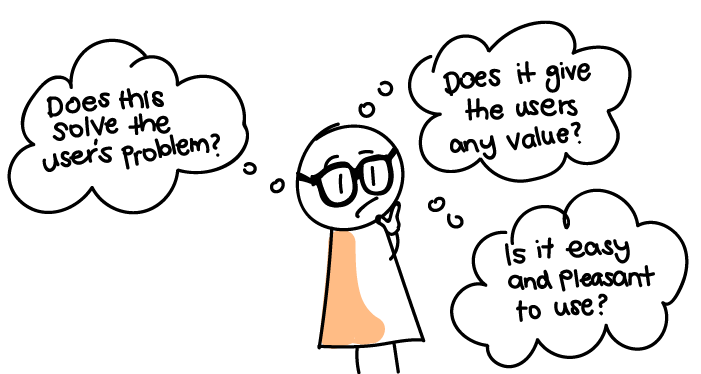The success of your design depends on how users perceive it
Regardless of the number of iterations from your previous design, how confident you are in explaining your design decisions is dependent on how users perceive the design.
These are the questions that run through the minds of every designer after coming up with a design.
“You can never predict how your design will be perceived.”
This is why you need to arm yourself with tools to make informed decisions on your design approach.
Here are two basic UX research tools that we would like to share with you:
1. User Research
Before you start designing, you should always understand your target audience well by investigate the following:
- Understanding the user behaviours — how do they interact with the current product?
- Find out the user needs — what is the component that motivates them to use the product?
- What are some problems they face?
User research encompasses a variety of observations and analysis methods ranging from creating your own user personas to having individual interviews and focus groups with the target audience.
This process helps clear ourselves of any false assumptions and prevents us from being biased in our designs – designing from our personal preference.
“Always ensure that your design meets the insights that you have gathered from the user research”
2. Usability Testing
After coming out with the designs, you would probably wonder, “Does my design work as expected?”
Conducting usability tests will examine the ease of use of your design by the end users.
Here are some tips in conducting a usability testing:
- Choose goal-orientated tasks — identify and list down the tasks that represent the most common user goals (eg. purchase process, reservation process).
- Set the scenarios — create and describe the scenarios to the audience to put these tasks in a more realistic context.
- Establish clear success criteria — set a quantitative metrics (e.g. completion rate, error rates and time on task) to meet your test goal.
After the testing is completed, consolidate all the data to identify the list of usability issues that you may need to fix in your designs. Ultimately if users can’t accomplish their assigned tasks, all else is irrelevant.
Conducting usability tests at various intervals throughout the iterative design process ensures that the final product meets all the usability requirements and enhances the user satisfaction.








